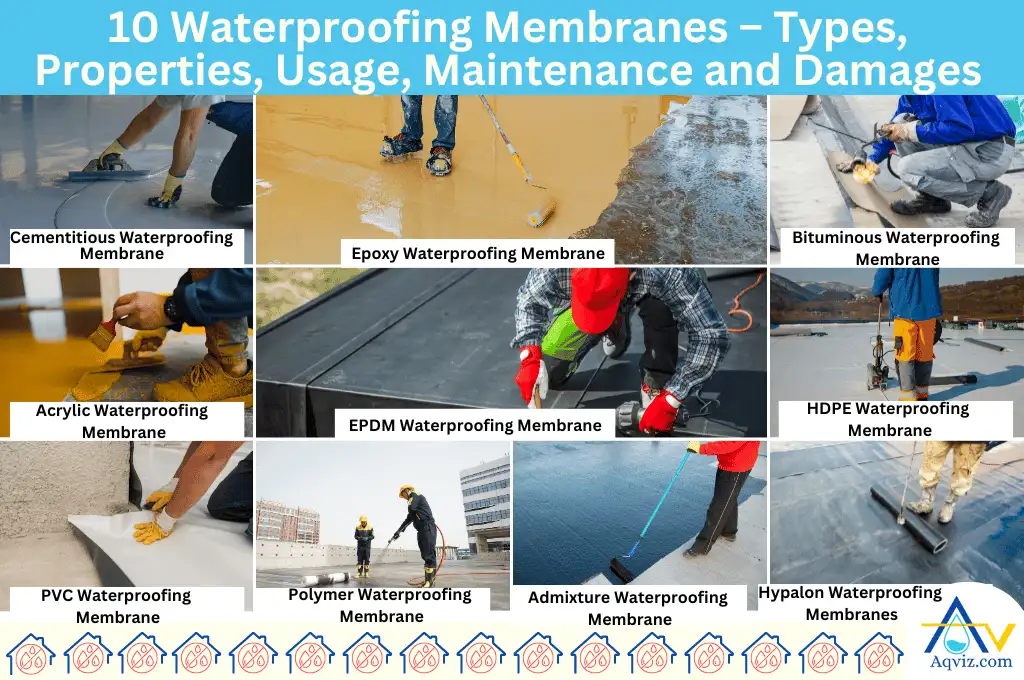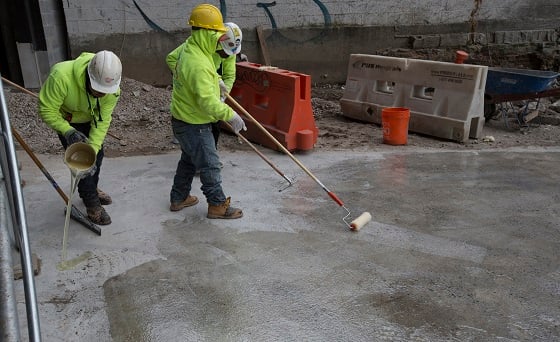French drain installation Omaha: Cost, Benefits, and Planning Tips
How Waterproofing Functions: A Detailed Check Out Methods and Technologies
Waterproofing is important for safeguarding frameworks from moisture-related damage. It entails numerous methods and innovations that produce obstacles versus water invasion. Traditional methods, such as compressed clay, coexist with contemporary technologies like liquid-applied membranes. Understanding the subtleties of these approaches is vital for reliable application. Nonetheless, the effectiveness of any kind of waterproofing solution pivots not only on the techniques made use of but also on recurring maintenance and evaluation. What are the crucial aspects that affect long-lasting performance?
Recognizing the Basics of Waterproofing
Waterproofing is a vital procedure that protects structures from water invasion, which can cause significant damage with time. This approach includes the application of various products and strategies developed to produce an obstacle versus dampness. The main goal is to stop water from permeating surface areas, which can create damage, mold growth, and structural instability.Various variables influence the selection of waterproofing approach, including the type of structure, its area, and environmental problems. Recognizing the physics of water movement and the residential properties of various materials is essential in picking an efficient waterproofing solution.Effective waterproofing not just safeguards structures however likewise enhances their longevity and stability. Usually, it is incorporated right into the design stage of building and construction to assure extensive protection. As understanding of water-related problems expands, the value of understanding waterproofing principles comes to be significantly clear to engineers, contractors, and homeowner alike.
Conventional Waterproofing Techniques
Conventional waterproofing methods have actually been made use of for centuries, depending on tried and true strategies and products to safeguard frameworks from water damages. One of the earliest approaches entails the use of clay, which, when compressed, creates an all-natural obstacle versus moisture. Furthermore, asphalt, a sticky, black material stemmed from petroleum, has actually been used for its water-resistant residential properties, typically related to roofing systems and foundations.Another technique entails the application of lime-based plasters, which give a breathable layer that enables wetness to run away while stopping water access. Thatch roofing, a conventional technique still seen in some societies, offers exceptional waterproofing as a result of its tightly packed straw layers.Moreover, making use of stone and block has been noticeable, as these materials are inherently resistant to water when correctly installed. Overall, typical waterproofing techniques emphasize the significance of selecting appropriate products and building and construction methods to boost longevity against water invasion.
Modern Waterproofing Technologies
Advancements in contemporary waterproofing modern technologies have actually reinvented the means structures are shielded from water damage. Innovative strategies such as liquid-applied membrane layers and innovative sealants have enhanced the efficiency and versatility of waterproofing remedies. These modern technologies enable seamless application, reducing the danger of leakages and guaranteeing complete protection over complicated surfaces.Moreover, the assimilation of smart modern technologies, such as wetness sensors and automated tracking systems, makes it possible for real-time evaluation of waterproofing performance. This aggressive method promotes prompt maintenance and lowers long-lasting fixing costs.Additionally, developments in spray-applied finishes offer fast application and outstanding adhesion, adjusting to different substratums while supplying durable security. Techniques like polymer-modified systems even more enhance adaptability and longevity, making them ideal for varied settings. Overall, modern waterproofing modern technologies not just minimize water invasion but likewise add to the long life and sustainability of structures, noting a considerable shift in the sector.
Products Made Use Of in Waterproofing
The effectiveness of waterproofing solutions heavily counts on the materials used in their application. Various products are utilized to develop obstacles against water access, each with unique homes suited for various settings. Frequently utilized materials include membranes, finishes, and sealants.Liquid-applied membranes, commonly made from polyurethane or acrylic, develop a smooth obstacle that adapts to complex surface areas. Sheet membrane layers, normally built from rubber or thermoplastic, deal durability and are perfect for bigger areas. In addition, cementitious waterproofing products, made up of cementitious compounds, provide exceptional bond and flexibility.Sealants made from silicone or polyurethane are necessary for joints and joints, making certain complete waterproofing inc security. In addition, advanced materials, such as geo-composite membrane layers, combine multiple functions, enhancing efficiency. Overall, the option of waterproofing materials is important in attaining durable and effective water resistance, customized to particular task requirements and ecological conditions.
Usual Applications of Waterproofing
Waterproofing plays a vital duty in various industries, guaranteeing the long life and integrity of structures. Usual applications consist of residential remedies that secure homes, commercial infrastructure that safeguards organizations, and industrial setups that call for robust protection against moisture. Understanding these applications highlights the relevance of waterproofing in preserving both security and functionality throughout various atmospheres.
Residential Waterproofing Solutions
Numerous house owners encounter obstacles with moisture invasion, making efficient domestic waterproofing options crucial. Different techniques exist to address this issue, consisting of exterior and interior waterproofing systems. Interior services often involve the application of sealers and layers to basement walls, which aid avoid water infiltration. Outside methods typically consist of the installation of drain systems and water-proof membranes that divert water away from the foundation.Additionally, property owners might think about sump visit this site right here pumps to remove water build-up and dehumidifiers to manage moisture levels. Correct grading and the use of seamless gutters also play an important function in handling water flow around the home. By applying these methods, property owners can greatly lower the risk of water damage and mold development, making sure a dry and secure living setting.

Commercial Infrastructure Defense
Efficient waterproofing solutions play a critical role in the defense of commercial infrastructure. Foundation waterproofing Omaha. These methods are essential for guarding structures, vehicle parking structures, and bridges from water damage, which can compromise architectural honesty and cause costly repairs. Usual applications consist of the setup of membrane layers, layers, and sealants that create obstacles against moisture infiltration. Locations such as cellars, roof coverings, and outside walls are typically focused on to guarantee longevity and durability. In addition, waterproofing systems can boost power performance by preventing water-related issues that may bring about mold and mildew development and wear and tear. By carrying out durable waterproofing actions, property proprietors can protect their investments and preserve operational performance, ultimately adding to the general sustainability of business centers
Industrial Applications Summary
While numerous fields encounter distinct difficulties, the need for trusted waterproofing solutions stays a constant in commercial applications. Industries such as production, building and construction, and energy typically experience atmospheres where moisture direct exposure can jeopardize architectural honesty and operational performance. In making centers, waterproofing is important for securing machinery and materials from water damages. In building and construction, it safeguards structures and cellars versus groundwater infiltration. The power sector counts on waterproofing for the defense of tools in hydroelectric plants and offshore frameworks. Additionally, food handling markets make use of waterproofing to assure health and compliance with safety requirements. Generally, efficient waterproofing solutions are necessary for boosting durability, security, and efficiency throughout various commercial setups.
Upkeep and Durability of Waterproofing Solutions
Although waterproofing services are made to offer lasting security against wetness invasion, routine maintenance is crucial to ensure their efficiency and longevity - Water Solutions Omaha. Routine examinations play a substantial role in recognizing prospective issues such as fractures, peeling off, or signs of water damage. Addressing these issues immediately can avoid additional wear and tear and pricey repairs.Additionally, cleaning the surface of waterproof areas assists get rid of dust and particles that could compromise the stability of the waterproofing obstacle. It's likewise suggested to reapply safety coverings or sealers as recommended by makers to keep ideal performance. Ecological elements, such as UV exposure and extreme weather, can impact the lifespan of waterproofing products, making normal evaluation vital
Frequently Asked Inquiries
Can Waterproofing Be Applied in Cold Weather?
The concern of using waterproofing in imp source winter raises issues about attachment and healing. Several items may not carry out at their ideal in reduced temperatures, necessitating cautious selection and factor to consider of certain guidelines for effective application.
How Much Time Does Waterproofing Normally Last?
The duration of waterproofing effectiveness differs based upon materials and environmental factors. Generally, it can last from 5 to 10 years, yet regular maintenance and examinations are vital to assure peak performance and long life.
Is Do It Yourself Waterproofing Effective and Safe?
The performance and safety of do it yourself waterproofing depend on different variables, consisting of material top quality and application method. While some people attain satisfying results, others may run into issues that endanger lasting protection and structural integrity.
What Are the Indicators of Failing Waterproofing?
Signs of stopping working waterproofing consist of noticeable water stains, peeling paint, mold and mildew growth, mildewy odors, and dampness in wall surfaces or ceilings - Foundation waterproofing Omaha. These indications recommend compromised barriers, necessitating timely examination and possible removal to stop further damage
Just how Do I Pick the Right Waterproofing Specialist?
